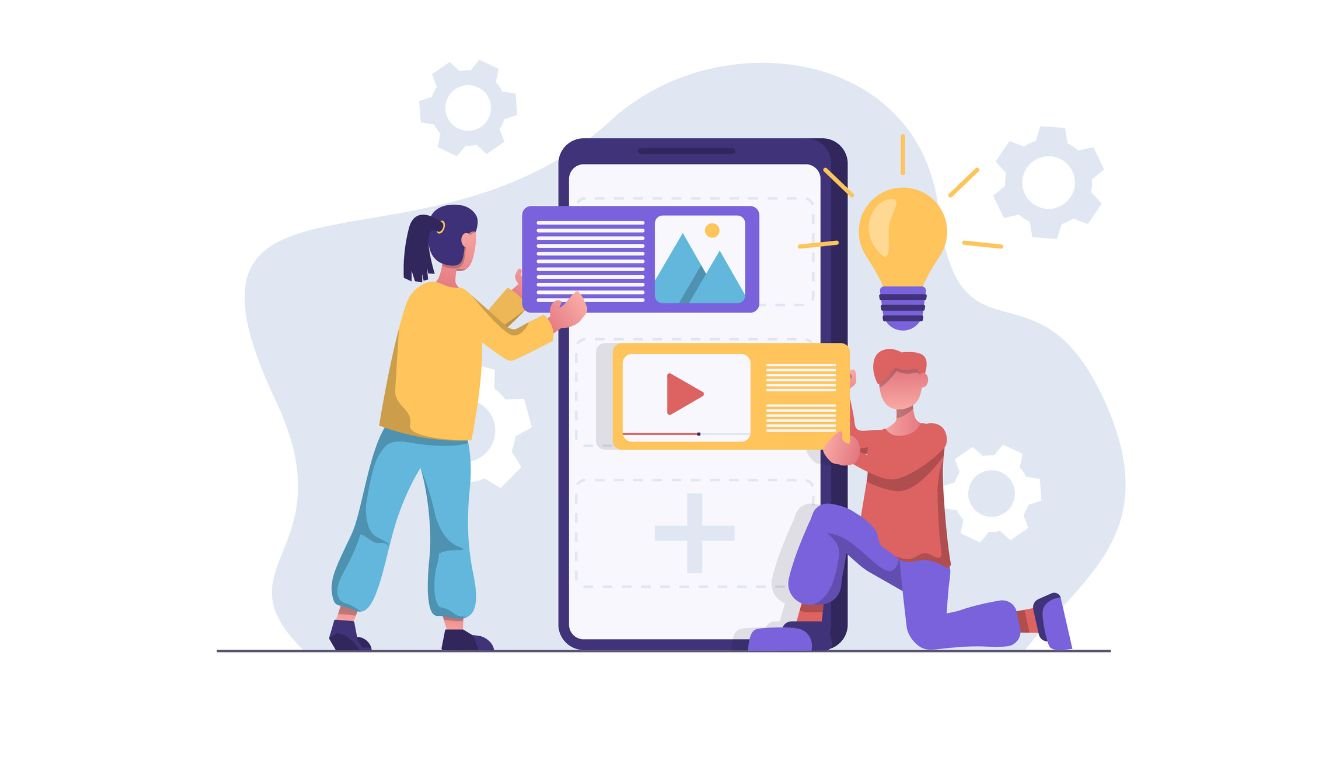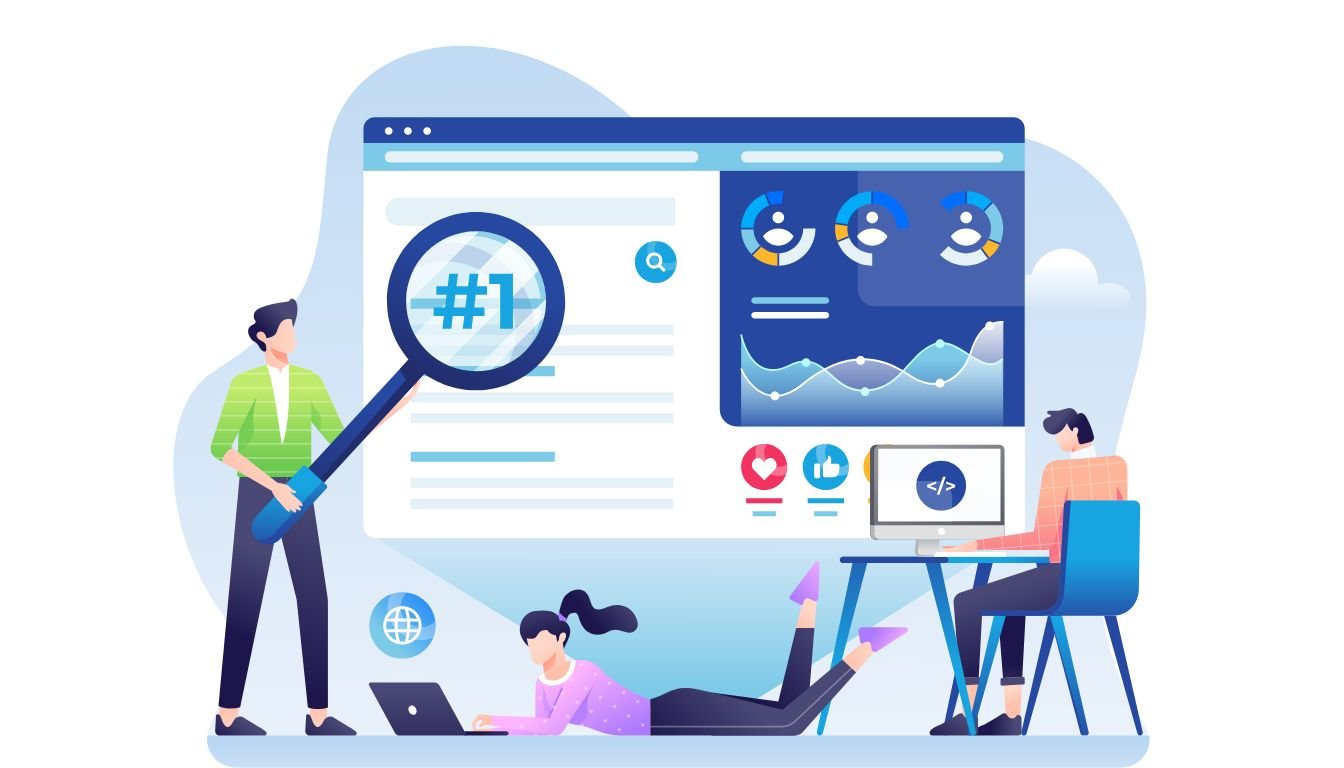Affiliate Disclaimer: Some of the links on this site are 'affiliate links.' This means if you click on the link and purchase the item, we may receive an affiliate commission.
Affiliate marketing can feel overwhelming at first, but understanding affiliate traffic sources is key to getting results. These affiliate traffic sources are the platforms and methods that drive visitors to your offers—whether they’re browsing social media, searching on Google, or checking emails. Without effective affiliate traffic sources, even top-tier affiliate programs can fall flat.
For beginners, understanding how to drive targeted affiliate traffic is the first step toward building a sustainable income. Finding the affiliate traffic sources that connect you to an audience ready to engage and, eventually, convert is key. Whether you’re working with free strategies or paid options, knowing where to focus your energy on affiliate traffic sources can save you time and maximize your earnings. Ready to learn how to make affiliate traffic sources work for you? Let’s break it down.
Key Takeaways
- Choose search engines and social media platforms as starting points for affiliate traffic sources. They’re beginner-friendly and effective.
- Blogging works well for building trust and offering valuable content, which indirectly drives affiliate clicks.
- Use email marketing to nurture relationships with your audience while recommending affiliate products.
- Consider paid options like PPC ads for quicker results, but only if your budget allows and you’ve done research.
- YouTube and TikTok are great for engaging videos, especially if your niche thrives on visuals or tutorials.
- Forums and online communities can help you share your affiliate links naturally by being active and helpful.
- Build genuine connections with your audience; trust is key to converting clicks into sales.
- No matter the platform, consistency and patience are essential. Results take time, but they’re worth the wait.
Check out this video on some of the best affiliate traffic sources:
What Are Affiliate Traffic Sources?
When you’re starting with affiliate marketing, understanding your affiliate traffic sources can save you a lot of frustration. Think of affiliate traffic sources as bridges that connect your audience to your affiliate offers. They play a critical role in determining whether your audience engages and converts—or just clicks away. While there are many ways to drive affiliate traffic, they primarily fall into two categories: paid and organic. Each affiliate traffic source has its strengths and challenges, and finding the right balance is what leads to long-term success.
Paid Traffic Sources
Paid traffic is exactly what it sounds like—you’re paying to get your content in front of your target audience. Platforms like Google Ads, Facebook Ads, and native ads make this possible. Here’s a closer look at some key aspects to consider:
- Google Ads: These allow you to directly target users by keywords and intent. For example, if someone searches “best kitchen blenders,” you can have your affiliate ad show up at the top of the page. It’s powerful, but it can also get pricey depending on your niche. Learn more about paid traffic sources like Google Ads, Facebook Ads, and others here.
- Facebook Ads: With Facebook advertising, the level of audience targeting is impressive. You can filter by age, interests, location, and even behaviors. The downside? Competition is stiff, and you need to continually tweak your campaigns. Get additional insights on how to combine Facebook Ads with affiliate marketing here.
- Native Ads: These are ads that match the look and feel of the platform they’re on, like promoted articles on a news website. Native ads can be less intrusive, but they also require strong content to spark engagement. You can read more about the pros and cons of native advertising here.
Pros of Paid Traffic:
- Instant visibility and immediate results.
- Scalability—you can adjust your budget to reach a wider audience.
Cons of Paid Traffic:
- High costs, especially in competitive industries.
- Requires consistent monitoring and optimization, which can be time-consuming.
Exploring affiliate traffic sources is essential for any affiliate marketer. Whether utilizing organic methods or paid advertisements, understanding these affiliate traffic sources will optimize your campaigns for success.
Paid traffic often feels like driving a sports car; it’s fast but comes with upkeep costs. It’s a great way to jump-start campaigns but may not last forever unless your returns outweigh the expense.
Organic Traffic Sources
Organic traffic works differently. It’s about bringing visitors to your site naturally, without paying directly for clicks or impressions. Through techniques like search engine optimization (SEO), blogging, and an effective social media strategy, you build an audience over time. Here’s how:
- SEO (Search Engine Optimization): Optimizing your site with the right keywords helps you rank higher on search engines like Google, bringing in sustainable, high-quality traffic. For beginners, SEO is affordable but requires patience. For tips on combining SEO with social media, visit this resource.
- Blogging: Writing helpful, engaging blog posts can build a loyal audience and keep them coming back. A well-structured blog is not only useful for SEO but also positions you as an authority on your niche. Get advice on maximizing organic traffic through blogging here.
- Social Media Strategy: Platforms like Instagram, TikTok, and Twitter aren’t just for influencers—they’re crucial for affiliate marketers too. Sharing engaging content and interacting with followers helps you drive organic traffic to your offers. Learn more about how social media works with SEO to boost organic traffic here.
Pros of Organic Traffic:
- Cost-effective—you’re not dropping money on ads.
- Long-term benefits—each blog post or social media update builds your presence over time.
Understanding paid affiliate traffic sources can help beginners choose the right strategies for their marketing efforts.
Cons of Organic Traffic:
- It’s a slow burn. Consistent effort is required before you see returns.
- You’re at the mercy of algorithms on both Google and social platforms.
Organic traffic might feel like planting a tree; it takes time to grow, but once it does, it provides shade for years. The good news? With a solid strategy in place, organic traffic can yield impressive results that compound over time.
By understanding the differences between paid and organic traffic sources, you can decide which approach—or combination—aligns with your goals and resources.
Top Paid Traffic Sources for Affiliate Marketers
Paid traffic is often the fuel that powers affiliate marketing campaigns. With so many platforms offering targeted advertising, you can tailor your approach to find the perfect mix. Whether you’re looking to gain quick visibility or reach niche audiences, these top paid traffic sources can help affiliates maximize their earning potential.

Social Media Advertising
Social media platforms like Facebook, Instagram, and TikTok have evolved into goldmines for affiliate marketers. These platforms allow you to connect with a highly targeted audience and offer immense creative flexibility.
Similarly, organic affiliate traffic sources are crucial for long-term success in the affiliate marketing world.
Creating high-conversion affiliate ads begins with understanding your audience. Ask yourself: What’s their pain point? What kind of tone resonates with them? Platforms like Facebook and Instagram thrive on visual storytelling, which means your ad needs to catch attention within seconds. Focus on high-quality images or videos, concise copy, and a compelling call to action (CTA).
Here are some tips to guide your success:
- Use the right format: Carousel ads work great for showcasing multiple products, while video ads shine when you want to demonstrate how a product solves a problem.
- Keep testing: Split-testing (A/B testing) is essential. Experiment with your headlines, visuals, and CTAs to find out what converts.
- Target wisely: Leverage detailed platform analytics to focus on the right audience, whether by age, interests, or behaviors.
Interested in learning more about social media advertising strategies for affiliates? Take a look at this guide to get started.
Search Engine Advertising
Search engine advertising involves platforms like Google Ads and Bing Ads. These networks are particularly effective for promoting affiliate offers because they allow you to target users actively searching for products.
Google Ads is the industry leader, thanks to its massive audience and powerful targeting options. Bing Ads, while often overlooked, presents an excellent opportunity to tap into a less competitive audience, especially if you’re targeting specific demographics like older users or niche markets.
To make the most of search engine advertising:
- Keyword research is key: Use tools like Google’s Keyword Planner to identify terms your audience is actively searching for. Focus on long-tail keywords to lower costs and improve targeting.
- Maintain ad relevance: Make sure your ad copy matches both the search intent and the content on your landing page. Google rewards relevance with a higher Quality Score, which lowers ad costs.
- Set a budget cap: Without proper management, ad spend can escalate. Allocate a daily budget and monitor ROI frequently.
Not sure which platform is best for you? Check out this comparison of Google Ads vs. Bing Ads to weigh your options effectively.
Video and Display Advertising

Video and display advertising offer a visually impactful way to engage your audience, and their popularity continues to surge. Platforms like YouTube and Google’s Display Network are ideal for capturing attention with stunning visuals or educational content.
With YouTube ads, think about how the viewer consumes content. Your message needs to hook them in the first five seconds. Whether you opt for skippable ads or sponsored videos, the script and visuals play a critical role in converting viewers.
Display ads (banner ads) work best when they grab attention without feeling intrusive. Use clean, eye-catching designs paired with clear CTAs. Ad placement is equally important—run ads on high-traffic websites relevant to your niche.
Key best practices for video and display ads include:
- Keep it short and actionable: Videos between 15–30 seconds and banners that highlight just one offer tend to perform well.
- Optimize for mobile: With so much traffic coming via smartphones, ensure your ads look great on all devices.
- Follow trends: Native ads and interactive formats often yield higher engagement.
Looking for additional tips? Take a look at this comprehensive guide on display ads best practices for actionable insights.
Paid traffic can improve your affiliate marketing efforts and create immediate opportunities to connect with a targeted audience. By honing your ads and using these strategies effectively, you’ll be well-positioned to scale your campaigns and drive results.
Top Organic Traffic Sources for Affiliate Marketers
Growing organic traffic is the backbone of sustainable affiliate marketing. When you focus on free traffic sources, you’re building long-term visibility for your content without having to heavily rely on paid ads. Whether you’re crafting SEO-optimized content, engaging with social media audiences, or nurturing email subscribers, each approach can help establish a thriving affiliate marketing setup.
Search Engine Optimization (SEO)
Optimizing for affiliate traffic sources gives you the long game advantage in affiliate marketing. When done right, understanding these affiliate traffic sources can secure a steady stream of high-intent visitors to your site. The key is creating high-quality, keyword-rich content that resonates with your target audience. Tools like Ahrefs or SEMrush can help you pinpoint the affiliate traffic sources your audience is searching for.
Start by building a foundation:
- Content creation: Write in-depth articles that solve problems and answer questions in your niche. Product reviews and comparison guides often perform well.
- Backlink strategies: High-quality backlinks from reputable sites can significantly improve your domain authority.
- Keyword optimization: Use primary keywords naturally in headings, meta descriptions, and throughout your post.
SEO isn’t an overnight fix—it’s more like planting seeds and waiting for them to bear fruit. But when you’re consistent, it works. Check out these affiliate SEO tips to learn more details about strategies that work.
Blogging and Content Marketing
Blogging is a proven workhorse for many affiliate marketers. By creating a niche blog, you can establish yourself as an authority in your subject, building trust while subtly guiding readers toward your affiliate offers. You don’t need to be Shakespeare—write honestly and keep value at the heart of your posts.
Some tips to succeed:
- Focus your blog on a specific niche to attract a loyal audience. Pick something you’re passionate about—it’ll shine through in your writing.
- Use storytelling to connect emotionally with your audience. Sharing personal anecdotes or case studies engages readers and makes your blog memorable.
- Regularly update with fresh content to keep readers coming back. Evergreen content, like “Top 10” lists or how-to guides, works wonders.
The power of blogging comes from its ability to blend education with persuasion. Need help getting started? Check out this guide on affiliate blogging to learn more.
Leveraging Social Media for Organic Traffic
Social media is a goldmine for affiliate marketers looking to tap into organic traffic. Platforms like TikTok, Instagram, and YouTube not only allow you to showcase products but also help you build a personal connection with your followers.
How can you make the most of social platforms?
- Start with the platforms your target audience uses most—TikTok for Gen Z, Instagram for millennials, or YouTube for anyone looking for tutorials.
- Focus on content that grabs attention—the first five seconds make or break your success. Short videos, compelling infographics, or storytelling reels work well.
- Engage with your audience in the comments and through DMs. People love buying from brands (or individuals) they feel emotionally invested in.
Organic social efforts are a marathon, not a sprint. Don’t shy away from experimenting—tap into these social media growth tips to take your strategy further.
Email Marketing

Email marketing allows you to stay top-of-mind with consumers who’ve already shown interest in your content. It’s essentially a digital handshake that lets you continuously nurture and convert your audience over time.
The recipe for success includes:
- Building your list: Use opt-in forms, free resources, or lead magnets to encourage sign-ups. Promising an eBook or a cheat sheet related to your niche works well.
- Segmenting your subscribers: Group members based on behavior or interests. For instance, people who downloaded your “Best Tech Gadgets” PDF are likely into tech.
- Crafting killer emails: Write personalized, valuable messages. Mix informative content with promotional ones to keep things balanced.
Building an email list isn’t tough if you have the right tools. Resources like this affiliate email marketing guide are invaluable for getting started.
Guest Posting and Partnerships
If you want to grow faster, collaborating with others in your niche can supercharge your efforts. Guest posting and partnerships are like giving your website an instant credibility boost while opening the door to fresh audiences.
Here’s why it works:
- Guest posting benefits: Publishing thoughtfully crafted posts on well-regarded sites gives you backlinks and sends traffic your way. Make sure your guest articles offer genuine value—don’t just stuff them with affiliate links.
- Partnership perks: Collaborations, whether through joint webinars or Instagram takeovers, help you tap into a whole new audience base aligned to your niche.
Not sure where to start with partnerships? This quick guest blogging primer walks you through setting it up effectively.
When done well, these strategies work together to create a cohesive organic traffic pipeline, driving reliable traffic to your affiliate offers without spending a dime on ads.
Affiliate traffic sources are vital to understand for effective marketing strategies.
Emerging Affiliate Traffic Trends and Insights
The affiliate marketing world isn’t static—it keeps evolving in response to technology trends and user behaviors. As 2025 unfolds, the way you tap into traffic sources will need to reflect where consumers spend their time and attention. From the dominance of mobile-first advertising to the rise of push-based interactions and innovative applications of AI, understanding the latest affiliate traffic trends can help you stay ahead of the curve. Let’s explore how you can harness these emerging methods effectively.
Mobile Traffic and In-App Advertising
It’s no surprise that mobile traffic has exploded. With nearly everyone glued to their smartphones, mobile advertising is no longer optional—it’s where most of your audience lives. In fact, in-app advertising is expected to dominate, as app usage climbs to almost 7.49 billion users by 2025. That’s huge for affiliates looking to tap into this growing space. Platforms like gaming apps and utility apps provide ideal opportunities to reach engaged users without breaking the bank.
So, how do you leverage in-app advertising for affiliate success? Here are key strategies:
- Focus on user behavior: Target specific app categories where your audience is active. For instance, gaming apps work for younger demographics, while finance apps cater to professionals.
- Create high-impact ads: Ads embedded naturally within apps often see better engagement. Think rewarded video ads—users willingly watch them for in-app perks, which keeps your audience invested in your promotion.
- Ride the programmatic wave: Programmatic advertising automates ad placement, ensuring your ads appear where they’re most likely to perform.
Curious to learn more about mobile advertising’s trajectory? Explore mobile advertising trends for 2025.
Push Notifications and SMS Marketing
You’ve probably noticed that push notifications and SMS messages grab your attention faster than email. That’s because they feel immediate and personal. And here’s why you should care: click-through rates (CTR) for push notifications can exceed those of emails—especially when paired with a time-sensitive or value-packed offer. SMS, on the other hand, has an astounding open rate of 98%, crushing virtually every other channel.
To integrate these methods effectively:
- Push Notifications: Deliver hyper-personalized offers. Tailor messages by segmenting users based on behaviors or preferences. For example, if someone clicked your camping gear ad in the past, send them notifications when similar deals become available.
- SMS Marketing: Keep things concise and user-focused. Nobody likes a long-winded text, so make your message short, impactful, and paired with a clear call-to-action (e.g., “Save 20%—Shop Now!”).
Ensure compliance with local SMS laws, such as double opt-ins, to avoid spam complaints. Get tips on boosting engagement for both channels through this SMS marketing guide.
Native Ads and Advanced Platforms
Native ads are the affiliate marketer’s secret weapon. Unlike banner or pop-up ads, native ads blend seamlessly into the platform’s content—making them less intrusive and more engaging. When positioned as “recommended articles” or video streams, they feel organic and trustworthy. But the real game-changer? Advancements in technologies like AI and blockchain are reshaping native advertising and affiliate traffic optimization altogether.
Here’s how these advancements are making waves:
- AI-Powered Targeting: AI tools are transforming how ads are created and distributed. For example, AI now crafts personalized ad creatives and suggests placements optimized for higher conversions. Visualize each click as tailored uniquely for its viewer.
- Blockchain Reliability: Blockchain is stepping in to enhance transparency, ensuring your ad budgets are spent effectively. By tracking and verifying ad placements, it minimizes fraudulent traffic—a growing concern in affiliate marketing.
Want a closer look at how AI impacts native ad strategies? Check out this article on native ads and AI advancements.
By embracing these shifts, you’re keeping up with trends and setting your campaigns up for success in an increasingly competitive landscape.
FAQ: Affiliate Traffic Sources for Beginners in 2025
What are affiliate traffic sources?
Affiliate traffic sources refer to the platforms and methods affiliates use to drive visitors to their affiliate links. These include social media platforms (like Facebook, Instagram, TikTok), websites and blogs, paid advertising (Google Ads, Facebook Ads), email marketing, YouTube, and specialized forums like Reddit or Quora. The key is finding a source that fits your audience and goals.
Which traffic source is best for beginners?
Social media and blogging are great starting points for beginners. They’re cost-effective, easy to scale, and help you build a loyal audience over time. Platforms like Instagram, TikTok, and YouTube work well for visual content, while blogging with SEO can attract consistent organic traffic if you focus on a specific niche.
Should I use paid ads as a beginner?
Paid ads can work well, but they’re risky if you’re not experienced. It’s important to have a clear understanding of your audience, test different campaigns, and start with a small budget. Platforms like Facebook Ads or Google Ads are beginner-friendly if you use their learning tools and stick to your limits.
How can I use SEO for affiliate traffic?
SEO helps your content rank higher in search results, making it easier for potential buyers to find your affiliate links. Focus on keyword research, quality content, and building backlinks from trusted websites. Write for humans first and search engines second—you want engaging, helpful content that solves problems.
Do social media platforms work for affiliate marketing?
Yes, social media is one of the top affiliate traffic sources for marketers. Platforms like TikTok, Instagram, and YouTube are great for creating engaging content that drives clicks. Just make sure to follow each platform’s rules on affiliate links and avoid being overly salesy—balance valuable content with promotion.
Is email marketing still effective for affiliate promotions?
Absolutely. Email marketing is still one of the most reliable ways to drive traffic and conversions. Building an email list allows you to directly connect with your audience. Use it to share valuable tips, product recommendations, and promotions, but don’t spam; always provide something useful.
How much money should I spend on traffic sources?
If you’re just starting, it’s better to focus on free or low-cost options like social media and blogging to minimize risk. Once you’ve earned a bit of commission, consider reinvesting into paid ads or tools that optimize your results. Stick to a budget you’re comfortable with.
How do I know if a traffic source is working?
Track key metrics like click-through rate, conversion rate, and overall affiliate revenue. Tools like Google Analytics and the tracking dashboard of your affiliate program will help you see where your traffic comes from and how it performs. Don’t just focus on clicks—look at actual conversions.
Can I combine multiple affiliate traffic sources?
Yes, combining affiliate traffic sources can boost your results. For example, you could use social media to drive quick traffic and blogging for consistent, long-term visitors. The trick is to balance your efforts and not spread yourself too thin. Experiment with a few sources and expand as you grow.
What’s the most common mistake beginners make?
A big mistake is focusing exclusively on selling instead of building trust. Audiences can spot inauthenticity a mile away. Share honest reviews, offer valuable advice, and disclose your affiliate relationships clearly. People are more likely to buy from affiliates they trust.
Final Thoughts
Affiliate traffic sources are the backbone of a thriving affiliate marketing strategy. Whether you opt for the immediate visibility of paid options or the sustained growth that organic methods offer, the key is understanding which channels align with your goals and resources. From social media ads to SEO-driven content, each source plays its part in driving potential customers toward your offers.
But here’s a piece of advice: don’t put all your eggs in one basket. Experiment with different affiliate traffic sources, track your results, and refine your approach as you go. Testing is where the magic happens—it’s how you figure out what works best for your audience and niche.
Affiliate marketing is about building a strategy that consistently brings value to your audience. Start small, learn from your data, and scale what works. As you explore new affiliate traffic sources, consider how they can fit into your existing marketing strategy. The right traffic source, paired with persistence, will get you one step closer to success.

